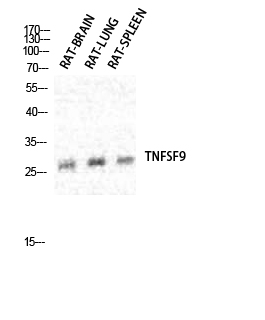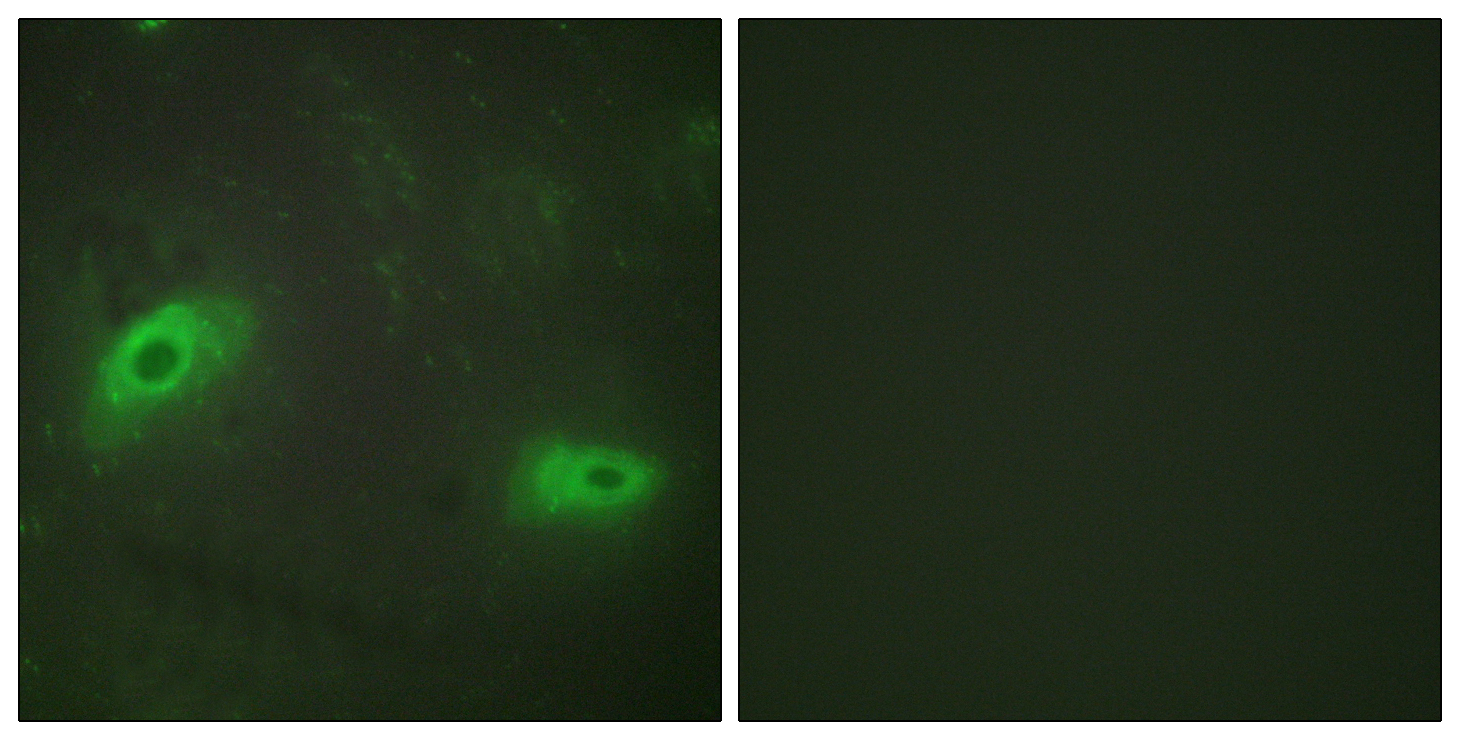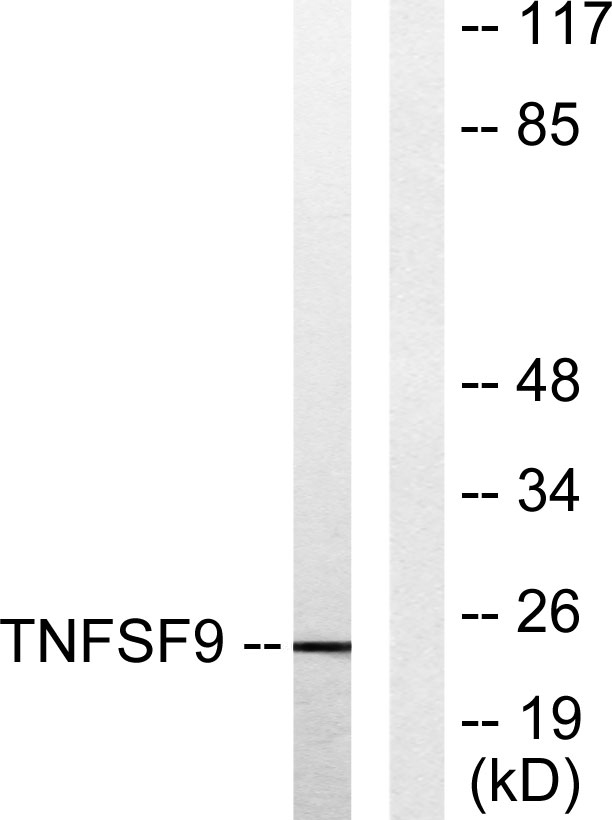CD137L Polyclonal Antibody
- Catalog No.:YT0723
- Applications:WB;IF;ELISA
- Reactivity:Human;Mouse
- Target:
- CD137L
- Fields:
- >>Cytokine-cytokine receptor interaction
- Gene Name:
- TNFSF9
- Protein Name:
- Tumor necrosis factor ligand superfamily member 9
- Human Gene Id:
- 8744
- Human Swiss Prot No:
- P41273
- Mouse Swiss Prot No:
- P41274
- Immunogen:
- The antiserum was produced against synthesized peptide derived from human TNFSF9. AA range:31-80
- Specificity:
- CD137L Polyclonal Antibody detects endogenous levels of CD137L protein.
- Formulation:
- Liquid in PBS containing 50% glycerol, 0.5% BSA and 0.02% sodium azide.
- Source:
- Polyclonal, Rabbit,IgG
- Dilution:
- WB 1:500 - 1:2000. IF 1:200 - 1:1000. ELISA: 1:20000. Not yet tested in other applications.
- Purification:
- The antibody was affinity-purified from rabbit antiserum by affinity-chromatography using epitope-specific immunogen.
- Concentration:
- 1 mg/ml
- Storage Stability:
- -15°C to -25°C/1 year(Do not lower than -25°C)
- Other Name:
- TNFSF9;Tumor necrosis factor ligand superfamily member 9;4-1BB ligand;4-1BBL
- Observed Band(KD):
- 23kD
- Background:
- The protein encoded by this gene is a cytokine that belongs to the tumor necrosis factor (TNF) ligand family. This transmembrane cytokine is a bidirectional signal transducer that acts as a ligand for TNFRSF9/4-1BB, which is a costimulatory receptor molecule in T lymphocytes. This cytokine and its receptor are involved in the antigen presentation process and in the generation of cytotoxic T cells. The receptor TNFRSF9/4-1BB is absent from resting T lymphocytes but rapidly expressed upon antigenic stimulation. The ligand encoded by this gene, TNFSF9/4-1BBL, has been shown to reactivate anergic T lymphocytes in addition to promoting T lymphocyte proliferation. This cytokine has also been shown to be required for the optimal CD8 responses in CD8 T cells. This cytokine is expressed in carcinoma cell lines, and is thought to be involved in T cell-tumor cell interaction.[provided b
- Function:
- function:Cytokine that binds to TNFRSF9. Induces the proliferation of activated peripheral blood T-cells. May have a role in activation-induced cell death (AICD). May play a role in cognate interactions between T-cells and B-cells/macrophages.,similarity:Belongs to the tumor necrosis factor family.,subunit:Homotrimer .,tissue specificity:Expressed in brain, placenta, lung, skeletal muscle and kidney.,
- Subcellular Location:
- Membrane; Single-pass type II membrane protein.
- Expression:
- Expressed in brain, placenta, lung, skeletal muscle and kidney.
- June 19-2018
- WESTERN IMMUNOBLOTTING PROTOCOL
- June 19-2018
- IMMUNOHISTOCHEMISTRY-PARAFFIN PROTOCOL
- June 19-2018
- IMMUNOFLUORESCENCE PROTOCOL
- September 08-2020
- FLOW-CYTOMEYRT-PROTOCOL
- May 20-2022
- Cell-Based ELISA│解您多样本WB检测之困扰
- July 13-2018
- CELL-BASED-ELISA-PROTOCOL-FOR-ACETYL-PROTEIN
- July 13-2018
- CELL-BASED-ELISA-PROTOCOL-FOR-PHOSPHO-PROTEIN
- July 13-2018
- Antibody-FAQs
- Products Images

- Western Blot analysis of various cells using CD137L Polyclonal Antibody diluted at 1:1000
.jpg)
- Western Blot analysis of HuvEc cells using CD137L Polyclonal Antibody diluted at 1:1000

- Immunofluorescence analysis of HeLa cells, using TNFSF9 Antibody. The picture on the right is blocked with the synthesized peptide.

- Western blot analysis of lysates from HUVEC cells, using TNFSF9 Antibody. The lane on the right is blocked with the synthesized peptide.



